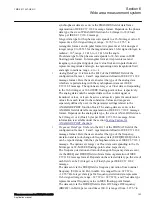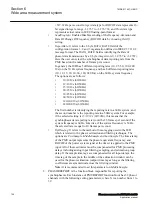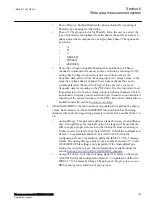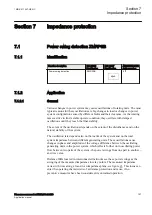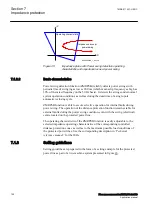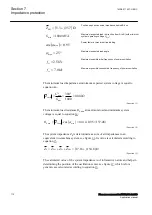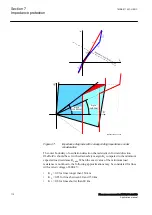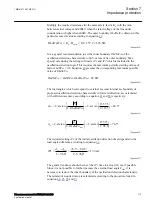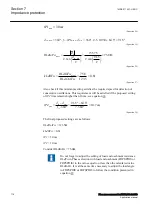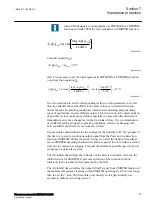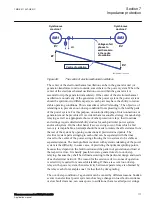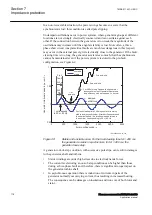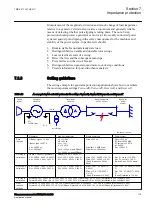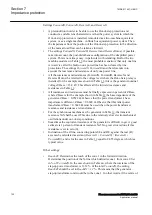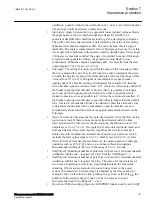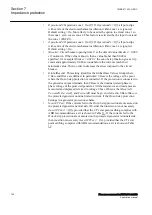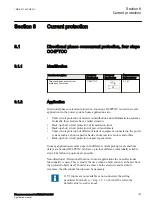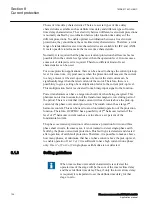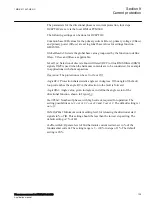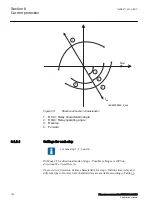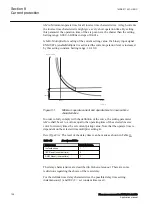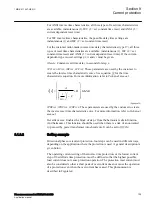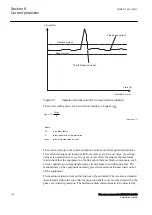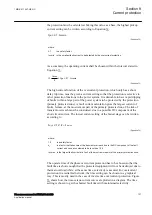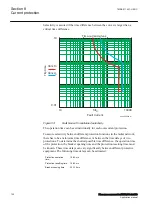
SM1
Synchronous
machine 1
Centre of oscillation
U, I
SM2
E1
E2
Synchronous
machine 2
E1
E2
Voltages of all
phases to
earth are zero
in the centre
of oscillation
SM1
Synchronous
machine 1
Centre of oscillation
U, I
SM2
E1
E2
Synchronous
machine 2
E1
E2
Voltages of all
phases to
earth are zero
in the centre
of oscillation
IEC10000107-1-en.vsd
IEC10000107 V1 EN-US
Figure 48:
The centre of electromechanical oscillation
The center of the electromechanical oscillation can be in the generator unit (or
generator-transformer unit) or outside, somewhere in the power system. When the
center of the electromechanical oscillation occurs within the generator it is
essential to trip the generator immediately. If the center of the electromechanical
oscillation is outside any of the generators in the power system, the power system
should be split into two different parts; so each part may have the ability to restore
stable operating conditions. This is sometimes called “islanding”. The objective of
islanding is to prevent an out-of-step condition from spreading to the healthy parts
of the power system. For this purpose, uncontrolled tripping of interconnections or
generators must be prevented. It is evident that a reasonable strategy for out-of-step
relaying as well as, appropriate choice of other protection relays, their locations
and settings require detailed stability studies for each particular power system
and/or subsystem. On the other hand, if severe swings occur, from which a fast
recovery is improbable, an attempt should be made to isolate the affected area from
the rest of the system by opening connections at predetermined points. The
electrical system parts swinging to each other can be separated with the lines
closest to the center of the power swing allowing the two systems to be stable as
separated islands. The main problem involved with systemic islanding of the power
system is the difficulty, in some cases, of predicting the optimum splitting points,
because they depend on the fault location and the pattern of generation and load at
the respective time. It is hardly possible to state general rules for out-of-step
relaying, because they shall be defined according to the particular design and needs
of each electrical network. The reason for the existence of two zones of operation
is selectivity, required for successful islanding. If there are several out-of-step
relays in the power system, then selectivity between separate relays is obtained by
the relay reach (for example zone 1) rather then by time grading.
The out-of-step condition of a generator can be caused by different reasons. Sudden
events in an electrical power system such as large changes in load, fault occurrence
or slow fault clearance, can cause power oscillations, that are called power swings.
1MRK 511 407-UEN C
Section 7
Impedance protection
Phasor measurement unit RES670 2.2 IEC
117
Application manual
Summary of Contents for Relion RES670
Page 1: ...RELION 670 SERIES Phasor measurement unit RES670 Version 2 2 IEC Application manual...
Page 2: ......
Page 46: ...40...
Page 52: ...46...
Page 92: ...86...
Page 112: ...106...
Page 178: ...172...
Page 216: ...210...
Page 232: ...226...
Page 286: ...280...
Page 328: ...322...
Page 340: ...334...
Page 380: ...374...
Page 381: ...375...

